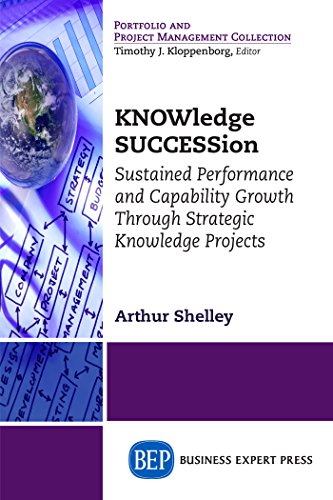
The Central Knowledge Management Dilemma: Assets or Relationships
It was during a peer assist call that I was reminded of the central dilemma of knowledge management. A group of knowledge managers were in a call to discuss working out loud as a concept with John Stepper – who wrote the book Working Out Loud – and other leaders in the movement. The conversation was organized as a way of addressing the concerns that had been raised by a few of the knowledge managers who had seen it implemented poorly and were skeptical. The comment that John made that resonated was, “For me, it’s about relationships.” While he was describing the make up of the groups, it connected a set of concepts like lightning connects the clouds to the earth.
Tacit vs. Explicit
The knowledge management community is largely enamored with the argument about whether knowledge can be made explicit. There are conversations about different types of tacit knowledge and their ability to be transformed into explicit knowledge and what is lost during the conversion process. You see this central theme in Lost Knowledge and The New Edge in Knowledge.
There are also discussions about what is lost when you convert from tacit, context-rich knowledge into contextless, explicit knowledge. The work of Gary Klein around recognition-primed decisions is discussed. (See Sources of Power and Seeing What Others Don’t for more.) The discussion bounces back and forth around what many believe is the central question.
More work is done to codify knowledge and to develop expertise location systems, both of which are seen as slightly competitive to the other yet needing to coexist. However, John’s comments made the real question clear. Are we in the business of relationships, or are we in the business of protecting corporate assets?
Silver Tsunami
It’s the disaster that large organizations are planning for. The Silver Tsunami is the rapid retirement of the most experienced and senior leaders in the organization. Baby boomers moved through the ranks of employment, like a snake eating a watermelon, and they’re ready to start leaving the workforce in droves. That means that organizations are wondering what it will be like to be left without the steady hands that have silently and not-so-silently guided the organization for decades.
Many, but not all, knowledge management programs are based on the fear of the upcoming Silver Tsunami and how they’ll cope. Often, these programs are focused on knowledge capture and conversion. Capture whatever is in the head of the most experienced and preserve it so that it can be used for future generations. The problem with this, as knowledge managers know, is that capturing the knowledge is not easy, and making it useful is harder. (See Sharing Hidden Know-How for more.)
Asset Overload
The knowledge capture process creates as its outcome a set of assets. Those assets range from the relatively unprocessed video interview with a subject matter expert speaking of their experiences to the fully converted explicit document or training that codifies what the expert knew as best as possible. However, both add to the growing challenge of finding the information that is being sought. Technology and search approaches continue to improve but not fast enough to keep pace with the increase in available information.
Working out loud itself creates additional assets to be searched – which is a good thing. The problem is that soon the noise from the knowledge capture activities, working out loud, and other approaches become a deafening noise that makes it hard to make any sense of the situation or find positive values to the noise itself.
The truth is that we’re all drowning in information and are struggling to make sense. (See The Information Diet and The Signal and the Noise for more about information overload.) Alvin Toffler was the first to characterize too much change as future shock. (See Managing at the Speed of Change) Many see the same challenges in the overload of information. (See The Organized Mind.)
However, there may be a different approach and answer that still allows for the creation of knowledge assets through capture and additional information through working out loud but is instead focused on the relational aspects of the knowledge management problem.
Working Out Loud Circles
It’s a dimly lit room in the basement of a church. Men and women saunter in with a mix of familiarity and trepidation. They’re identifying old friends and sizing up the people they don’t know. As they grab a cup of coffee, drop in a bit of money into the box, and find a seat, they continue to monitor the room as they start to shift their thinking insider their own heads – something that they know is both dangerous and necessary.
Out of nowhere, a man says, “Hello, I’m Bill, and I’m an alcoholic.” Shaken from their thoughts they answer in near unison, “Hello, Bill.” Groups like this meeting of Alcoholics Anonymous (AA) meet across the world as a way of forming a safe space for those struggling with an addiction to alcohol to share and be in a judgement free community. There are similar groups for every other kind of addiction that you might struggle with.
The program functions with a mixture of trust, respect, humility, and understanding. (See Why and How 12-Step Groups Work for more.) While rejecting the negative stereotypes of addiction, working out loud circles are designed to create the same sense of safety. They’re designed to create opportunities for folks to share what they’re working on and what they’re struggling with in an environment where they know they’ll get caring feedback and no – or at least little – judgement. The result of this environment is often trust and connectedness. (See Trust=>Vulnerability=>Intimacy, Revisited for more on how this works.)
This creates relationships – relationships that people feel comfortable leaning on when they need an answer, or they need help. Relationships are at the core of these groups – even when they rarely start out that way.
Affinity Groups
The best answer to creating a knowledge network are small groups. Working on a project or taking part in a working out loud circle are great ways to do that. However, this necessarily creates a scalability problem. It’s difficult for the right people to know what it is that you know. That’s where the traditional working out loud work and the search engines come into play.
Sharing your work makes it easier for people to become aware that you have the answers you seek. Your relationship is built through your mutual connections – or, more often in large organizations, through your shared identity. You build a modicum of trust, because you’re both working for the same organization. Direct relationships are best, but often you can leverage the fact that you work for the same organization as sufficient reason to help one another. (See The Deep Water of Affinity Groups for more.) After you’ve helped someone, you feel related to them – and vice versa. Getting to Yes notes that Benjamin Franklin would often ask for the loan of a book and would promptly return it. The act of him asking for a favor which the other person granted made Franklin seem slightly indebted to the other person, and this often fueled the start of relationships.
The Answer
The ultimate answer to the dilemma isn’t “either-or.” The ultimate answer is “and.” Working out loud can and should create explicit artifacts. Working out loud circles should generate deeper relationships. Working for the same organization should create an affinity that people can leverage. Perhaps the best way to create value as a knowledge manager is to take the best of both worlds and create positive spirals of trust and relationships that feed the engine of the organization.


